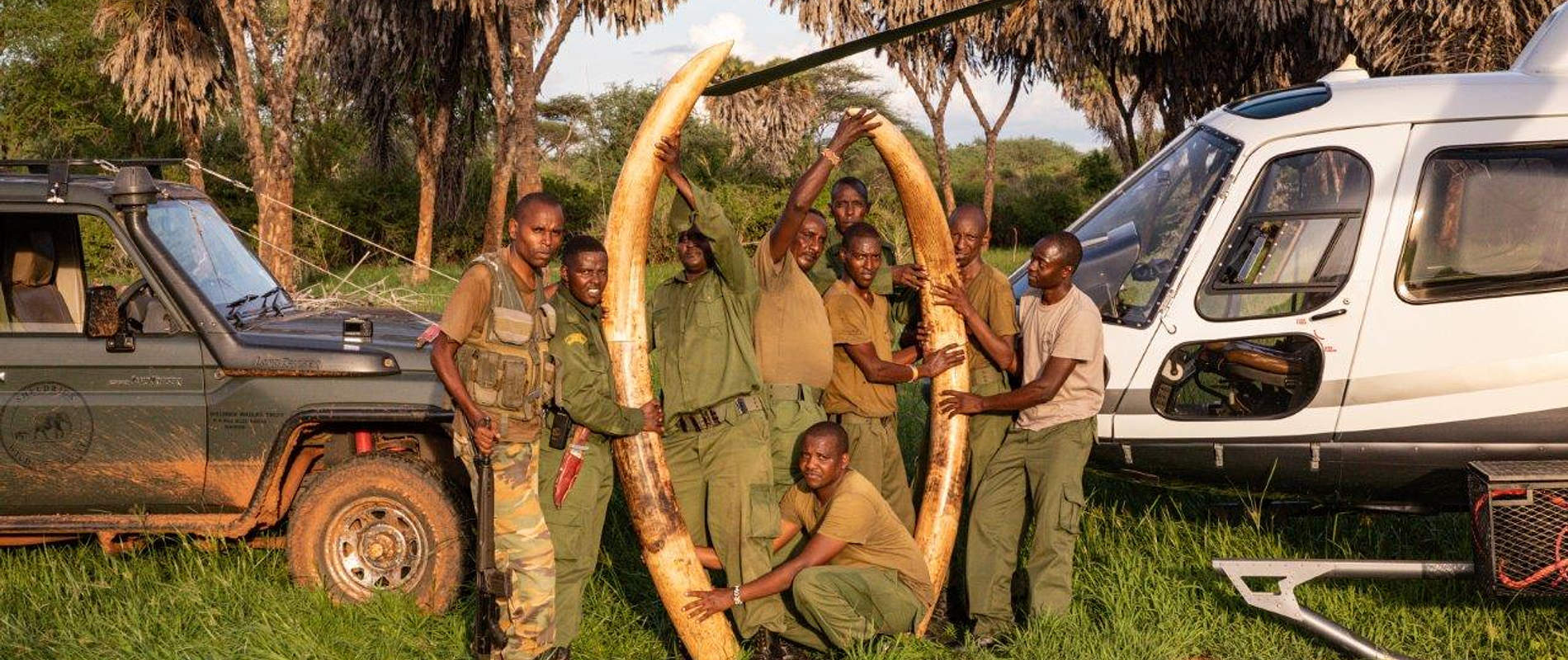December is invariably the quietest month of the year for the Aerial Unit. From the perspective of illegal activity sightings, this year was no exception.
However, we were faced with a tragedy on a scale we have never encountered before with the loss of one of our pilots. Mark Jenkins and his son Peter heartbreakingly lost their lives whilst on operation in Tsavo East National Park. Mark was a legend in conservation and Peter was following fast in his father’s footsteps. Both of them were fine men and exhibited so many admirable qualities that we shall strive to emulate. They died doing something that they were passionate about and their legacy will live on. Remembering Mark and Peter Jenkins.
Of the illegal activities that were recorded in December, the most prominent was illegal livestock grazing. While this has been an issue in the Tsavos for the many years, the KWS, with SWT’s help, is slowly reclaiming the Park for wildlife. In Tsavo East, where efforts have been more persistent and sustained, there are now only small livestock incursions, which are dealt with rapidly. The majority of these only occur a small distance into the Park (rarely more than 5 km), whereas livestock used to regularly be herded as many as 50km or at times up to 80km into the Park.
Many large, well-worn cattle tracks down to the Galana River are now used only by elephants, zebra, and other plains game showing that old scars are healing. Because of an indirect link between illegal livestock and poaching, we have witnessed a dramatic decrease in the amount of poaching occurring in areas that were previously overrun with livestock. The SWT’s aerial assistance in removing livestock primarily involves surveying the Park for incidences of livestock incursions and passing on coordinates to KWS. Since herders often play a game of cat and mouse with KWS rangers, these surveys need to be conducted frequently in order to keep track of livestock movements. One such operation in December involved an SWT fixed wing aircraft and helicopter, 4 vehicles, dozens of KWS personnel and the removal of 7000 head of cattle from the Park. The livestock situation in Tsavo West is not yet completely under control, and aerial surveys there recorded as many as 14,000 head of cattle on a single flight.

One significant poaching incident was recorded in December, which involved aerial assistance. While on patrol, SWT ground teams discovered footprints of suspected poachers which were followed for approximately 25 kilometres before the team eventually found the suspects. Unfortunately, the suspects spotted the team first and fled up the Yatta Plateau, making a successful getaway. This was not, however, before dropping a pair of enormous ivory tusks that they had been carrying out of the Park. The tusks weighed 69 and 70 kilograms (152 pounds and 154 pounds, respectively), making them some of the largest in the world by today’s standards. Due to the size and location of the tusks, in a relatively inaccessible part of the Park, they had to be slung out by helicopter. A carcass of an elephant, that the tusks are believed to have belonged to, was found near the direction that the suspects' tracks had originated. Due to the age of the carcass, and indeed the age of the elephant, it is difficult to ascertain whether or not he was deliberately poached or whether the tusks were retrieved opportunistically after he died of natural causes. Either way, he was able to pass on his remarkable genes to another generation of elephants in the northern area of Tsavo.
Charcoal burning was mostly isolated to areas outside of the Park, especially on Galana Ranch, where industrial scale charcoal burning continues in the eastern reaches of the ranch. However, 2 charcoal kilns were also discovered and later destroyed inside the Park in Tsavo East. Charcoal kilns are now a very rare occurrence inside the Parks thanks to consistent efforts by the Aerial Unit as well as ground teams over the course of the last decade. In time, with support from government agencies, this influence will hopefully extend well beyond the boundaries of the Park.

Another form of illegal activity that will require government intervention to halt is the illegal clearing of land for agriculture. This is a challenge in places like Galana Ranch, where fresh clearing was noted towards the south-eastern extent of the ranch. Fortunately, there is an eagerness on the part of the government to deal with this latest threat.
Several carcasses were discovered in December, the most recent victims of the ongoing drought in Tsavo and Kenya as a whole. Notably, the carcass of one large bull with 90-pound tusks was discovered during an aerial patrol along the Yatta Plateau. A further 6 elephant carcasses were found in the month with all but one having tusks intact. It was unclear if the tusks from the carcass without were naturally absent or had been removed.

The most exciting highlight in December was most certainly the sighting of 19 rhinos in a single patrol in Tsavo East. This is a new record sighting and truly incredible when one considers that just 10 years ago, there were only 9 rhinos left in Tsavo East altogether. Their population is expanding steadily, thanks to the efforts of many. Another interesting sighting was a tight knit herd of 60 giraffes, which is a much larger aggregation than is commonly seen in Tsavo. Giraffes are often found in relatively high concentrations; however a group of this size would usually be spread out over a few kilometres as opposed to tightly spaced. It should be noted that the herd comprised of a large number of calves.
